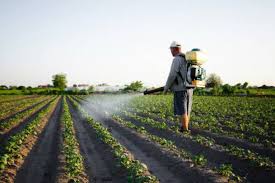
A Beginner's Guide to Choosing High-Quality Fungicides
Share
Fungicides play a vital role in protecting crops, plants, and gardens from harmful fungi that can destroy yields, spread diseases, and damage aesthetics. Whether you're a home gardener or a professional farmer, choosing the right fungicide can make a significant difference in plant health and productivity. But with so many options available in the market, how do you pick the best one? This guide will walk you through everything you need to know about selecting high-quality fungicides, especially if you're just starting out.
🌱 What Is a Fungicide?
A fungicide is a type of chemical or biological agent used to kill or inhibit the growth of fungi and their spores. These pests can cause devastating diseases like mildew, blight, rust, and root rot, which not only reduce crop yield but also affect the overall health of plants.
Fungicides are commonly used in:
- Agriculture (for food crops)
- Horticulture (flowers, trees, and ornamental plants)
- Home gardening (vegetables and fruits)
- Turf management (lawns, golf courses, parks)
If you're looking for high-quality fungicide products, explore our full range here:
👉 Browse All Products at Vedanta Agritech
🧪 Types of Fungicides
Before choosing a fungicide, it’s essential to understand the two primary types:
1. Contact Fungicides
Stays on the surface of the plant.
- Washes off with rain or irrigation.
- Needs frequent application.
- Works best as a preventive solution.
- Best for: Short-term protection, preventive care in dry climates.
2. Systemic Fungicides
- Absorbed into the plant’s tissues.
- Offers longer-lasting protection.
- Can treat existing infections.
- Requires less frequent reapplication.
- Best for: Treating infections and providing ongoing protection.
🧠 Key Factors to Consider When Choosing a Fungicide
1. Identify the Fungal Problem
Not all fungicides treat all types of fungi. First, identify the disease affecting your plants. Is it powdery mildew, downy mildew, rust, blight, or something else? Look for visible signs on the leaves, stems, or soil. If unsure, consult a local extension office or plant pathologist.
2. Check the Active Ingredients
Always read the label to find out what active ingredients are used. High-quality fungicides list their active components clearly. Popular active ingredients include:
- Copper-based compounds (common in organic farming)
- Chlorothalonil (used in contact fungicides)
- Mancozeb
- Propiconazole (systemic fungicide)
- Myclobutanil
Match the ingredient with the type of fungus you are targeting.
3. Choose Between Organic vs. Chemical Fungicides
- Organic fungicides use natural ingredients like neem oil, sulfur, or copper. They are safer for the environment and beneficial insects.
- Chemical fungicides are synthetic and often more potent but may require caution due to toxicity or environmental effects.
For home gardens or edible plants, many beginners prefer starting with organic options.
4. Evaluate Residual Activity
A good fungicide should offer protection over time. Systemic fungicides often provide longer-lasting effects, meaning you don’t have to spray every few days. This is especially helpful in regions with unpredictable rainfall or humidity.
5. Check for Resistance Management
- Fungi can develop resistance to fungicides if the same one is used repeatedly. Choose a fungicide that’s part of a resistance management strategy:
- Rotate fungicides with different FRAC codes (Fungicide Resistance Action Committee classification).
Use a combination of contact and systemic products.
6. Ease of Application
Look for products that are easy to mix and apply. Some fungicides come in ready-to-use sprays, while others are concentrates that require mixing. Beginners should look for user-friendly options with clear instructions.
7. Reputation and Reviews
Check product reviews, brand reputation, and feedback from fellow gardeners or farmers. Trusted brands like Vedanta Agritech often invest in research and provide more effective solutions.
⚠️ Safety First: Precautions to Follow
- Even high-quality fungicides can be harmful if misused. Always:
- Read the label thoroughly.
- Wear protective gloves, mask, and eyewear during application.
- Keep out of reach of children and pets.
- Store in a cool, dry place.
Follow recommended dosage and reapplication intervals.
If you have any questions, feel free to contact us via email.
🌿 Bonus Tips for Beginners
- Start with prevention: It’s easier to prevent fungal infections than to cure them.
- Avoid overwatering: Damp conditions promote fungal growth.
- Ensure good air circulation: Space plants appropriately.
- Clean garden tools regularly to prevent disease spread.
📌 Final Thoughts
Choosing the right fungicide doesn’t have to be overwhelming. Start by understanding the fungal problem you're facing, then match it with the right type of fungicide. Pay attention to labels, active ingredients, and safety precautions. With a little research and observation, you can keep your plants healthy, productive, and fungus-free.
Whether you’re caring for your backyard garden or managing a larger farm, investing in a high-quality fungicide will help you protect your hard work and enjoy lush, thriving plants.
🔗 Stay Connected with Us
